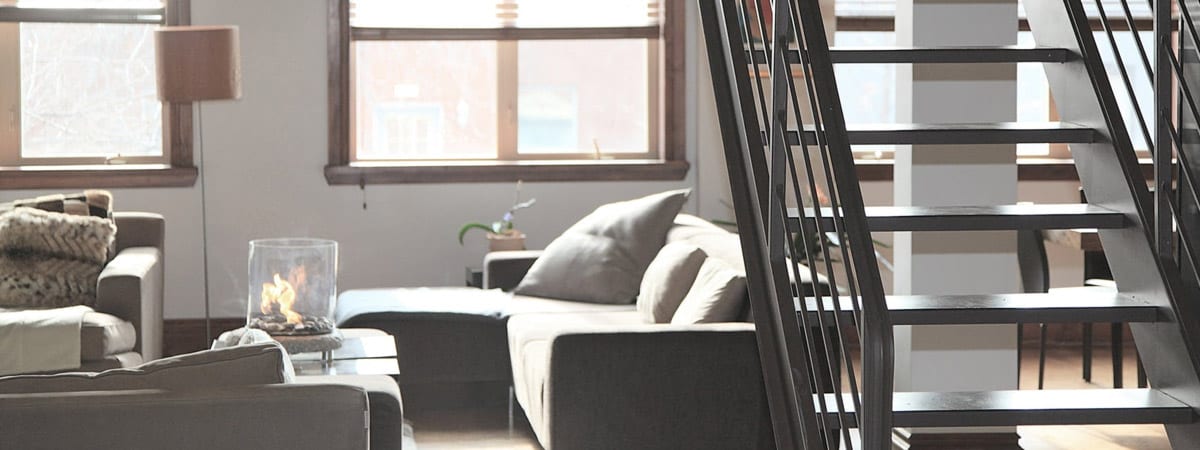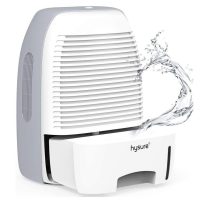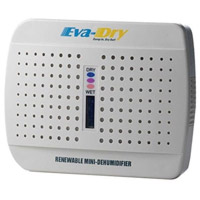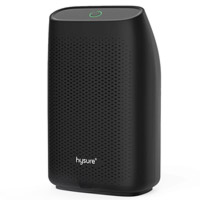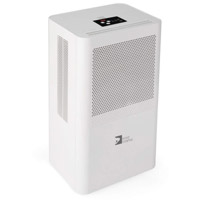Damp basements, crawl spaces, and bathrooms are potential breeding grounds for mold, mildew, and allergens that could put you and your family at risk.
One solution is to invest in a dehumidifier, a device that reduces high moisture levels to keep your indoor environment safe.
There's a catch, though. Dehumidifiers usually don't come cheap, so we spent 168 hours testing all the top brands to give you this list of the 5 best budget dehumidifiers.
Top 5 Cheap Dehumidifiers in 2020
Pro Breeze Electric Dehumidifier
Our pick for the best dehumidifier is the ProBreeze device. This product has an automatic shut-off feature so that the collection tank won’t overflow. With its budget-friendly price, it won't empty your pockets, too.
For added convenience, there's a LED light that sends off a warning signal when it’s time to empty the tank.
If you’re looking for compact, functional, and quiet dehumidifiers that are easy to move, then this choice could be for you. For the price, you’re getting a medium-sized tank with a capacity of 16 ounces.
It also removes up to 9 ounces of moisture in the air. This means if there’s a lot of water vapor in the air, and you’re running it 24 hours per day, you’ll have to empty the water tank every two days. The only drawback is that it does not come with continuous hose draining.
Key Features:
- Removes 9 Oz of Water per Day
- Lightweight and Portable
- Compact at 4.45 pounds
- No Moving Parts for Quiet Operation
- Good energy consumption
Hysure Portable 2200 Dehumidifier
Our pick for the 2nd best cheap dehumidifier is the Hysure Portable 2200. Out of all the dehumidifiers we tested, it proved to be a close winner because of its compact size and precise dampness control.
The control panel is easy to see with the full tank indicator light. It measures at about 11.8 inches by 7 inches wide, making it ideal for single room use.
It removes up to 18fl.oz (550ml) per day of moisture, with a 161 square foot coverage area (15 meters). Among the dehumidifiers we tested, this one was the quietest.
Key Features:
- Automatic Defrost
- Full Tank Indicator Light
- Compact size
- Minimal Moving Parts for Quiet Operation
Eva-Dry E-333 Wireless Mini Dehumidifier
Are you looking for the best dehumidifier unit that’s small, lightweight, and low maintenance? How about a product that doesn’t use batteries or even needs to be plugged in to work?
If that sounds like what you’re looking for, then this product could be the right choice.
After 20-30 days of collecting 8 to 10 ounces of water vapor, you have to recharge it so it can continue dehumidifying the space. According to the manufacturer, it can last up to 10 years.
Customer reviews claim that this product is best for closets and small rooms. It’s especially good for protecting your clothes and valuables from mold, mildew, and rot.
This compact design could be for you if you’re looking for good moisture-absorbing dehumidifiers for small damp spaces. It may not be as “big collector” of vapor like my recent pick that can collect up to 70 pints per day, but it does the trick.
For a portable dehumidifier unit that can handle a full 333 cubic feet or a 10′ x 10′ room size, this one is tough to beat. Although, I didn’t notice an energy star rating.
There are not many cheap dehumidifiers, quite like this one. Instead of using a tank to collect water, it has crystallized silica gel that absorbs moisture and doesn’t leak.
Key Features:
- Easy to use Mini 0.375 Pint Dehumidifier
- 5 Year Warranty from the Manufacturer
- Rechargeable Battery with Control Panel
- No Power Cord or Batteries Required
Hysure 700ml Compact Dehumidifier
Perhaps you like the efficiency of our first best cheap electric dehumidifier but wanted something more modern looking.
If so, this may be the best device for you.
It covers an equal amount of space as the Pro Breeze model at 150 square feet, or a 10′ x 15′ space, which is best for a small basement room, garage, attic, RV, or even a boat.
The water tank on this Hysure model is much bigger, though (24 ounces), but extracts about the same amount of pints of moisture per day (10 ounces). That means you won’t have to empty it as often as the Pro Breeze model.
A full-tank light indicator and automatic shut off feature are also included for total peace of mind. And it looks pretty sharp, too.
Key Features:
- 2 Year Warranty from the Manufacturer
- Easy to use Automatic Shut Off Feature
- 23 oz Collection Bucket
- One Button Control for Fan Speed and Humidity
Kolamama 68oz Portable Dehumidifier
Our final recommendation among the best budget dehumidifiers is this unit due to its large space coverage.
We’ll warn you that it does have the highest price tag of any other product on the page, but there’s a good reason for it.
One notable feature is that it has a large 100-ounce capacity water tank with ideal fan speeds.
If you live in an extremely humid area and want something that works fast and for long periods of time without messing with it, this is the best cheap dehumidifier unit we’d recommend.
Total area coverage is larger, at 323 square feet, making it our best dehumidifier choice for crawl spaces, bedrooms, basements, offices, garages, storage sheds, living rooms, and other large areas.
Customer reviews claim that although this unit is larger in size, it does not require caster wheels to move it. This device extracts about double the amount of moisture per day than our other recommended picks - 68 ounces or 4.25 pints of moisture, to be exact.
Check our list of 70 pint dehumidifiers for more options that can cover an area of up to 4500 cubic feet.
Key Features:
- 68oz Per Day Capacity
- Tank for Room Up to 323 Sq.ft
- LED Light Display
- 2 Year Warranty from the Manufacturer
What Features Should I Look For?
Water Capacity of Affordable Dehumidifiers
Dehumidifiers are designed to do one thing, and that’s to suck pints of moisture out of the air. But where does all of that water vapor go? It goes into a water tank. The total water capacity determines how much moisture can be collected before you have to empty the tank.
If you’re going to be around your dehumidifier unit a lot, you may not mind a smaller tank because you’ll be able to check on it regularly. But, if you tend to get busy as we do, a larger tank is well worth the investment because you won’t have to keep an eye on it as much.
A smaller unit can remove between 16 to 100 ounces of water from the air before they have to be dumped out. Depending on the size of the tank you get, and how humid the room is, it could mean the difference between emptying it every 2 days versus every 5 days, or more.
Daily Moisture Extraction
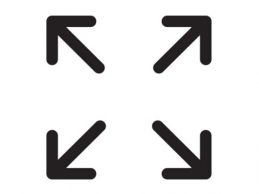
Aside from just looking out for easy to use and Energy Star stickers dehumidifiers, it is best to educate yourself on the Daily Moisture Extraction.
Another good thing to know about your new dehumidifier is how much moisture it can pull from the air on a daily basis.
If you live in an area with high humidity, the more moisture it can extract from the air, the fewer problems you'll have indoors.
Some lower-priced air dehumidifiers with poor reviews are not very efficient and are limited in the extracted amount of moisture per day. So, you'll want to pay close attention to this number when shopping around.
The product reviews above pull anywhere from 10 to 68 ounces of water vapor from the air in a 24-hour period. This range covers most people's needs for a compact dehumidifier unit.
Room Coverage of Budget Dehumidifiers

Here’s something you definitely don’t want to run into – buying a brand new electric dehumidifier (even with an Energy Star sticker), only to find out that it’s not powerful enough to get the job done.
To avoid this headache, you need to make sure that you pick the best dehumidifier that can cover the entire area that you’re going to place it in.
Most brands utilize the term “cubic feet” (also known as cu ft) to indicate how much space humidifiers can handle. This measurement is easy to understand. It is simply the width x length x height of an area or room.
Some of the best dehumidifier that is small and portable cover anywhere from 300 to 2,200 cubic feet.
To help you understand what this means in a real-life setting, here is an easy to understand guide:
- 300 cu ft is about 100 square feet (or a 10′ x 10′ room)
- 1,600 cu ft is about 200 square feet (or a 10′ x 20′ room)
- 2,200 cu ft is about 275 square feet (or a 10′ x 27′ room)
Your goal is to get the best budget-friendly dehumidifiers that can at least cover the size of your desired space. If you don’t, you’ll just be wasting your money.
To make this easy for you, we’ve converted cubic feet to square feet for all of the products we recommended above. Square footage is much easier to calculate. Just multiply the width x length (in feet) of space to get your answer.
Automatic Shut Off
One thing most people enjoy about the modern technology of the best dehumidifiers is how quiet they are. As much as you like having a dehumidifier, the best part is actually forgetting that it's in the room, too.
We emphasized this point because it could become a potential problem if your electric dehumidifier doesn’t automatically shut off when the water tank reaches its max point. If the tank runs over, you’ll have a big mess to clean up.
For that reason, it’s preferred to choose the best dehumidifier with an auto shut-off function. It could be a lifesaver during those times when you’re not at home, or someone forgets to check on it. Another reason this feature is important is to save energy for low power consumption.
Every one of the portable dehumidifiers listed above includes this handy feature.
Cheap Dehumidifier Dimensions

One of the things that we like about small and mini dehumidifiers is that it's easy to move, and you can put them almost anywhere.
When you’re comparing options, you’ll want to find a good balance between the overall dimensions.
This is especially important if you’re going to utilize it in smaller locations in the house like a gun safe, inside an RV, camper, or boat.
Recommended Article: What's the Best Dehumidifier for Bathroom Use?
More Information Worth Considering
When the humidity is high in your house or anywhere, the air feels very heavy. This can make it difficult to breathe for people with certain respiratory conditions like COPD or asthma. It’s also one of the main reasons dehumidifiers exist.
A dehumidifier is an appliance that pulls the humid air in, removes the pints of moisture, and redistributes it into the home. It has a fan, a cooling unit or coils, a reheater, and a reservoir bucket to catch the excess water. Once you turn your dehumidifier on, the fan starts sucking the surrounding air into the unit.
The air gets circulated inside dehumidifiers, and it gets passed through the internal cooling coils. These coils lower the air’s temperature, and this cooler temperature allows the coils to pull the excess moisture from the air. The air is then quickly reheated. This reheated air is pushed back out into the room without the added moisture and therefore reduces the relative humidity levels.
Cheaper dehumidifiers utilize a tray or bucket to collect the moisture from the air. More expensive dehumidifiers also use that method to remove the pints of moisture, but some may also come with a hose that allows you to drain the water into a floor drain or pump.
What are the Indirect Health Effects of High Humidity?
There are several indirect health effects that come with having high indoor humidity. [1] You’ve likely noticed that the hot, humid air feels heavy and makes it more difficult to catch your breath.
It’s uncomfortable because this type of air actually interferes with your body’s natural ability to cool down and regulate your body temperature. Having a high humidity level indoors makes it difficult to cool down.
Also, viruses and bacteria thrive better in humid environments.[2] These things are also able to stay in the air instead of settling on surfaces for much longer periods. This means that it will increase your risk of getting sick by inhaling microorganisms in high humidity level environments.
Mold, fungi, and allergens also run rampant with a higher humidity level. In fact, mold and fungi prefer moderately damp and humid environments to grow. They can grow anywhere in your home, and this includes your carpets, furniture, air vents, ducts, bathrooms, tiles, walls, and closets.
The ideal relative humidity level for indoors is 30 to 50%. Any higher, and you’ll likely experience the issues outlined above. A small dehumidifier is an excellent way to reduce the humidity level in select areas of your home to maintain proper moisture levels.
What are the Benefits of Owning a Cheap Dehumidifier?
The main benefit of owning one of the best dehumidifiers is that it lowers your home’s indoor humidity levels. Once these decrease, the allergens, mold, and fungi in your home should start to decrease because they won’t have an ideal environment to thrive.
They can also get rid of that musty smell that seems to cling to everything in your home when higher than normal moisture levels exist. These unpleasant smells are usually caused by mold and mildew growth, so reducing the humidity level can get rid of the mold and mildew. This will also improve your home’s air quality and make your home more comfortable.
You might also notice a decrease in skin irritation and respiratory problems. This is especially noticeable if you have respiratory issues like asthma, chronic bronchitis, or COPD.
Additionally, if you’ve ever noticed that your clothes feel moderately damp inside your closet, an inexpensive dehumidifier may be just one thing you need. The high humidity level inside a bedroom can leave your clothes feeling this way, and a dehumidifier will help them feel drier (and normal).
Finally, running a dehumidifier can help use your air conditioner more efficiently. Air conditioners reduce the humidity level in order to cool down a home.
If the air inside your house has less moisture in it from using a dehumidifier, then your air conditioner doesn’t have to run as hard or often to make the temperatures pleasant. In turn, you can see your overall energy costs reduced, and this can potentially save you money by investing in a cheap dehumidifier. Find out how you can save money on your air conditioning bill.
You can also reduce your energy bills by using z-wave thermostats or budget-friendly smart thermostats.
The Best Cheap Dehumidifier is ...
With features that include a portable design and ultra-quiet function, the Pro Breeze Electric Dehumidifier is our top pick as the best cheap dehumidifier.
It has an output of just 23W per hour, making it an energy-efficient device even after running all day. This dehumidifier has an automatic power-off function along with a LED light that indicates when the water tank needs draining.
We are impressed with how it effectively takesnexcess moisture out of the air, covering up to 1200 cubic feet of space. This device operates quietly, so you get quality sleep while breathing in healthy air.
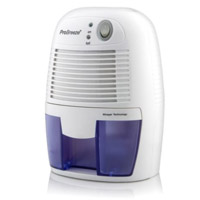
Pro Breeze Electric Dehumidifier
Our #1 Recommendation
- Removes 9 Oz of Water per Day
- Lightweight and Portable
- Compact at 4.45 pounds
- No Moving Parts for Quiet Operation
- Good energy consumption

